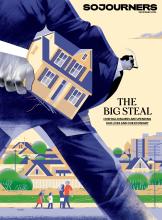Mar 12, 2020
As pastors and church leaders determine how best to shepherd their congregations during this health crisis, Sojourners reached out to those who have experience for their best words of advice. Below, we’ve compiled their thoughts.
Read the Full Article

Already a subscriber? Login
